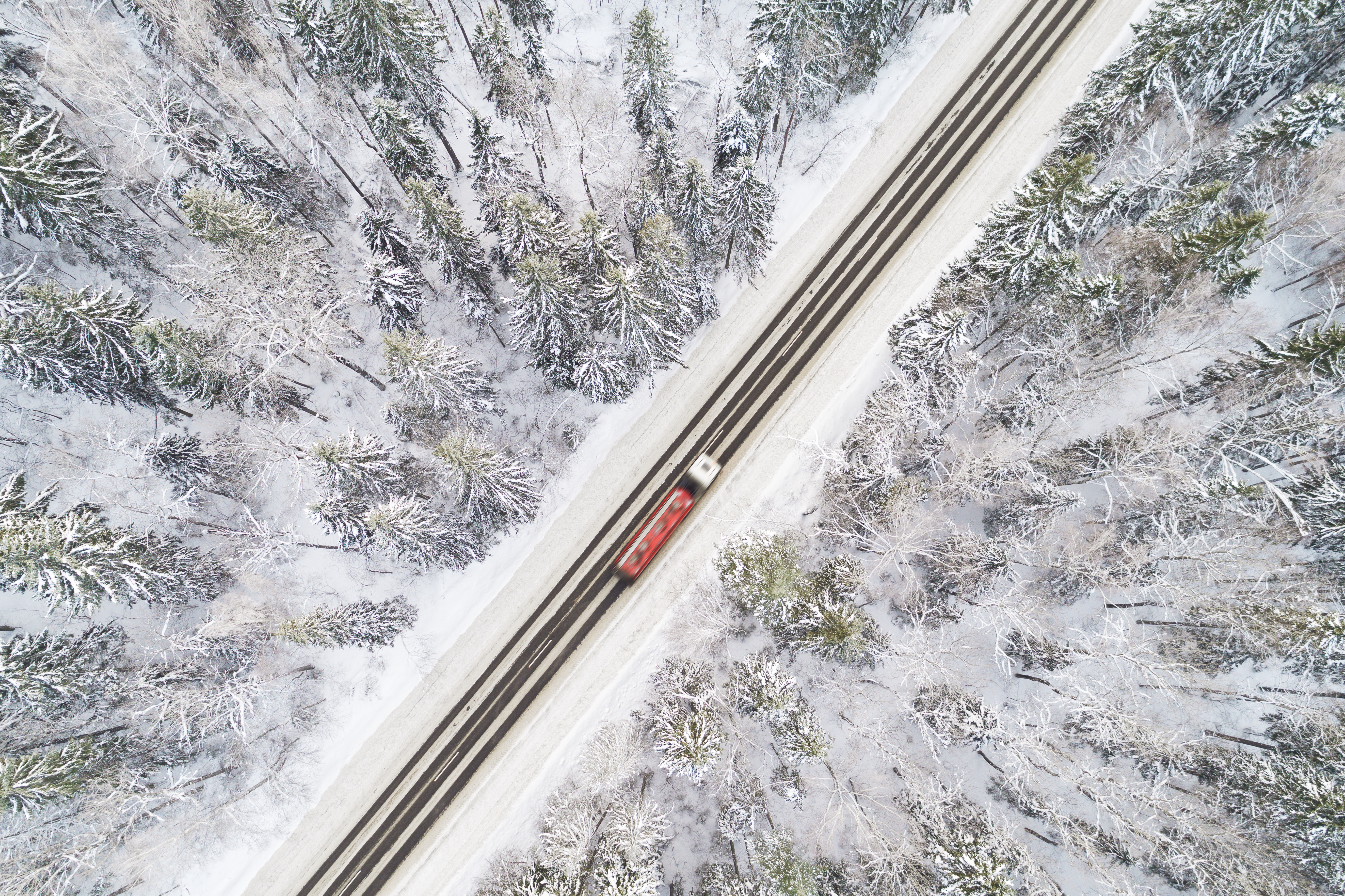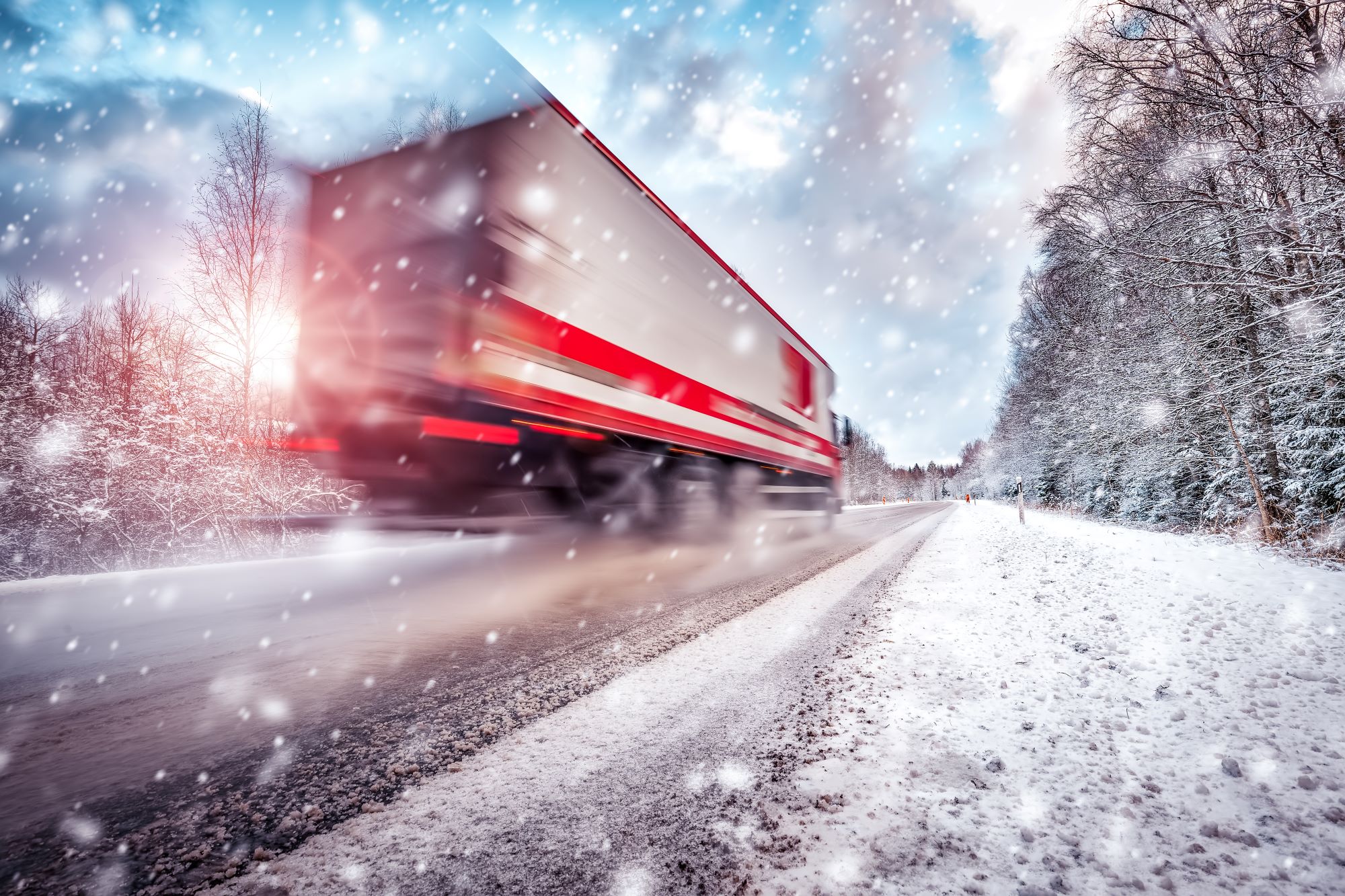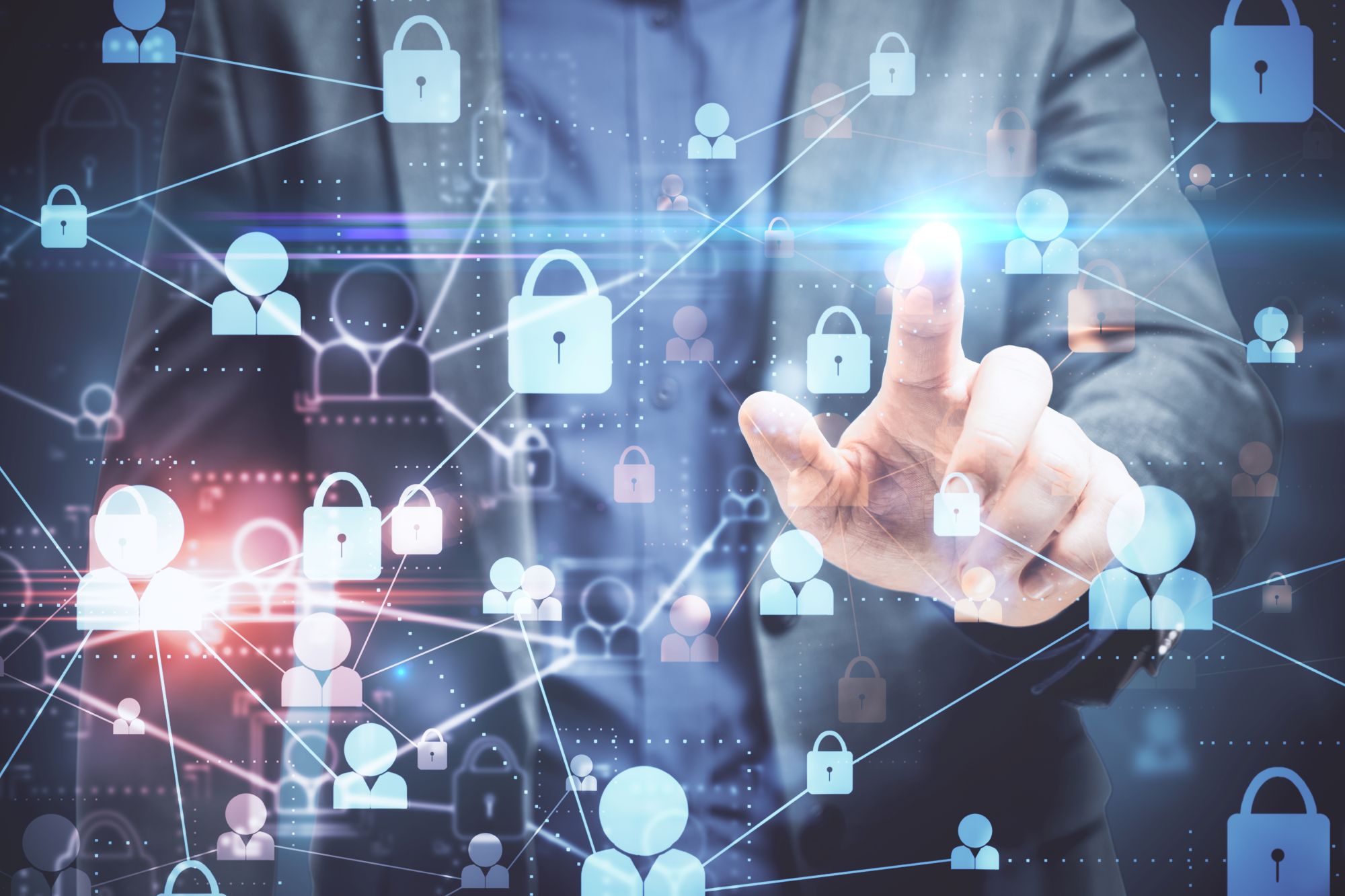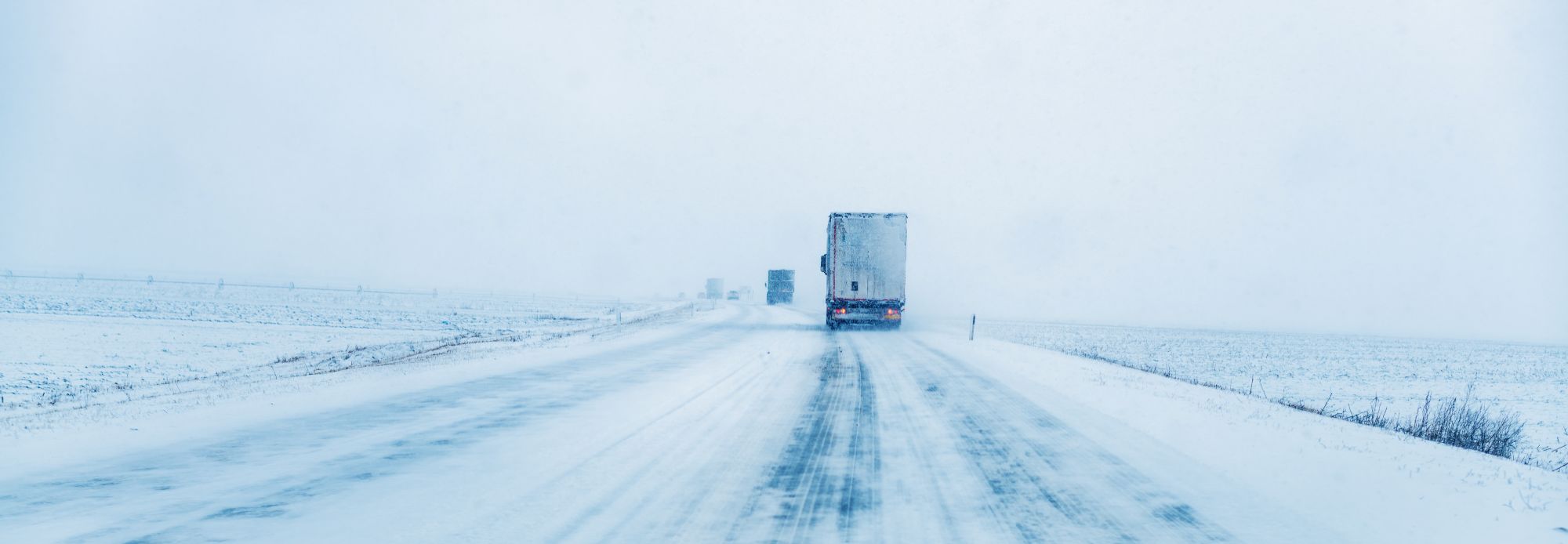
Miranda Blake
Guide de l'hiver européen à l'usage des chauffeurs routiers
Créée: 16/10/2024
•
Mise à jour : 27/12/2025
Les chauffeurs routiers sont confrontés à un ensemble unique de défis et de responsabilités pendant les saisons froides. Les accidents de la route graves se multiplient : [33 % des demandes d'indemnisation présentées pendant cette période sont considérées comme sérieuses] (https://atha.co.uk/news/why-you-are-more-likely-to-have-a-severe-road-traffic-accident-in-the-winter).
La préparation est donc cruciale. Nous vous indiquons ici comment les chauffeurs routiers peuvent rester en sécurité sur la route et à l'intérieur de leur cabine cet hiver.
Naviguer dans la tempête
Il est essentiel de conduire lentement et de maintenir une distance de sécurité avec les autres véhicules, en particulier dans les zones inondées. Il est conseillé de passer la vitesse inférieure et de faire tourner le moteur.
Les conseils suivants vous aideront également à conduire par temps orageux.
- Si vous perdez le contrôle sur une surface d'eau, ralentissez en levant le pied de l'accélérateur - n'essayez pas de freiner ou de braquer brusquement.
- Les véhicules surélevés sont plus vulnérables aux vents intenses - assurez-vous de bien tenir le volant et évitez les ponts dans la mesure du possible.
- Voyagez avec les rideaux ouverts si votre camion est vide. De cette façon, il y a moins de prise au vent.
Gestion de la neige et de la glace
Rouler à allure réduite et garder la distance nécessaire avec le véhicule qui précède est également un comportement à adopter en cas de verglas ou de neige. En fait, il est recommandé d'augmenter la distance de freinage jusqu'à 10 fois la distance normale, mais il peut être difficile d'en juger. Une enquête de l'Admiral a révélé que [le verglas est à l'origine de 10 % des accidents en hiver] (https://atha.co.uk/news/why-you-are-more-likely-to-have-a-severe-road-traffic-accident-in-the-winter). Vous pouvez savoir si vous conduisez sur du verglas si la route a l'air mouillée mais qu'il n'y a pas d'éclaboussures provenant d'autres véhicules.
D'autres conseils pour vous aider à conduire dans la neige incluent des inspections régulières du camion et l'assurance d'avoir tout l'équipement nécessaire avant votre voyage, comme des câbles de démarrage et des outils de dégivrage. De plus, soyez toujours conscient de la vitesse que vous devriez utiliser, car cela pourrait vous éviter de perdre le contrôle de votre camion. Sur les surfaces planes, utilisez le rapport le plus élevé possible. Dans les descentes, utilisez le frein moteur et passez les vitesses inférieures. Pour éviter que les roues ne patinent, passez à la vitesse supérieure lorsque vous vous éloignez, ce qui vous donnera la traction nécessaire pour déplacer le véhicule.

Assurer la visibilité
Avec les autoroutes dangereuses et les facteurs externes qui ont un impact négatif sur la vision et provoquent des accidents de camion, la visibilité est cruciale par tous les temps, en particulier lorsqu'il fait plus froid. Veillez donc à vérifier l'absence d'éclats ou de fissures sur votre pare-brise, car ils peuvent se propager plus rapidement pendant les mois les plus froids.
En outre, vous devez veiller à ce que vos feux, votre plaque d'immatriculation et votre pare-brise soient le plus visibles possible. Outre le nettoyage de la neige et de la saleté, il est conseillé de laver régulièrement votre véhicule afin d'éviter l'accumulation de sel de déneigement (qui favorise la corrosion).
Si la visibilité est mauvaise et que les conditions deviennent dangereuses, il est préférable de quitter la route et de se reposer au relais routier le plus proche. Si vous devez dépasser vos [heures de conduite] (https://snapacc.com/newsroom/discover-the-new-drivers-hours-rules/), vous pouvez utiliser une dérogation spéciale pour les conducteurs qui sont bloqués dans des circonstances uniques telles que des événements météorologiques extrêmes.
Évaluer la profondeur de la bande de roulement
Les basses températures peuvent également avoir un impact sur la fonctionnalité de vos pneus en réduisant la pression d'air. Les pneus usés augmentent malheureusement votre distance de freinage et réduisent votre niveau de stabilité sur les routes mouillées et verglacées.
Il est donc conseillé de vérifier la profondeur de la bande de roulement avant chaque voyage dans des conditions orageuses et autres conditions difficiles - de cette façon, vous saurez quand vous devrez régler les problèmes qui se présenteront.
Respecter la réglementation sur les pneus d'hiver
Il est également essentiel de connaître les différentes réglementations en matière de pneus d'hiver. Certains pays obligent les conducteurs à transporter des sacs de sable et des pelles, tandis que les chaînes à neige sont obligatoires dans d'autres. Continental a rassemblé un simple [guide des exigences en matière de pneus hiver] (https://www.continental-tyres.co.uk/b2c/tyre-knowledge/winter-tyre-laws/) pour le Royaume-Uni et l'Europe.
À partir du 1er novembre, les pneus d'hiver sont obligatoires :
- Autriche
- République tchèque
- Finlande
- France
- Lituanie
- Serbie
Dans d'autres pays, ils sont obligatoires plus tard dans le mois ou en décembre, ou bien ils dépendent des conditions météorologiques. Quant aux pneus cloutés, s'ils sont autorisés dans les pays ci-dessous, ils sont soumis à des règles strictes. Il est préférable de vérifier la réglementation de chaque pays avant votre départ.
- Autriche
- Bélarus
- Danemark
- Estonie
- Finlande
- France
France * Grande-Bretagne - Lettonie
- Liechtenstein
- Lituanie
- Norvège
- Espagne
- Suède
- Suisse
- Turquie
- Ukraine
Apporter les fournitures nécessaires
Vous devez également réfléchir à la manière dont vous pouvez prendre soin de vous en hiver. Cela peut paraître évident, mais assurez-vous d'avoir accès à suffisamment de nourriture et de boisson. Les risques de fermeture des routes étant plus élevés pendant les saisons froides, il se peut que vous ne puissiez pas toujours vous rendre à un relais routier. Préparez des en-cas ou des repas et, dans l'idéal, une boisson chaude dans une gourde.
Surtout si vous n'avez pas accès à un endroit où vous reposer, assurez-vous de pouvoir rester au chaud. Par exemple, emportez des blocs chauffants rechargeables. De même, ayez toujours des vêtements chauds et de rechange à portée de main ; cela vous sera particulièrement utile si vos vêtements deviennent froids et humides lors de tâches telles que le déneigement de votre pare-brise.
Idéalement, vous disposerez d'un kit de survie pour l'hiver comprenant de la nourriture, des boissons, un chargeur de téléphone portable, une lampe de poche, des couvertures, un gilet de sécurité, une pelle et des chaussures de marche résistantes.
Garantir l'accès aux aires de repos avec intruck
Si les conditions météorologiques ne sont pas de votre ressort, votre protection et celle des autres usagers de la route le sont. Vous devez donc vous assurer que vous disposez d'un endroit sûr et sécurisé pour vous garer dès que possible. Notre application intruck ou [page des cartes] (https://snapacc.com/map/) vous indiquera les prestataires de services à proximité, ainsi que des informations sur les services offerts par chacun d'entre eux.
Vous pouvez télécharger l'application intruck dès aujourd'hui en cliquant sur [ce lien] (https://intruckapp.com/download/).



